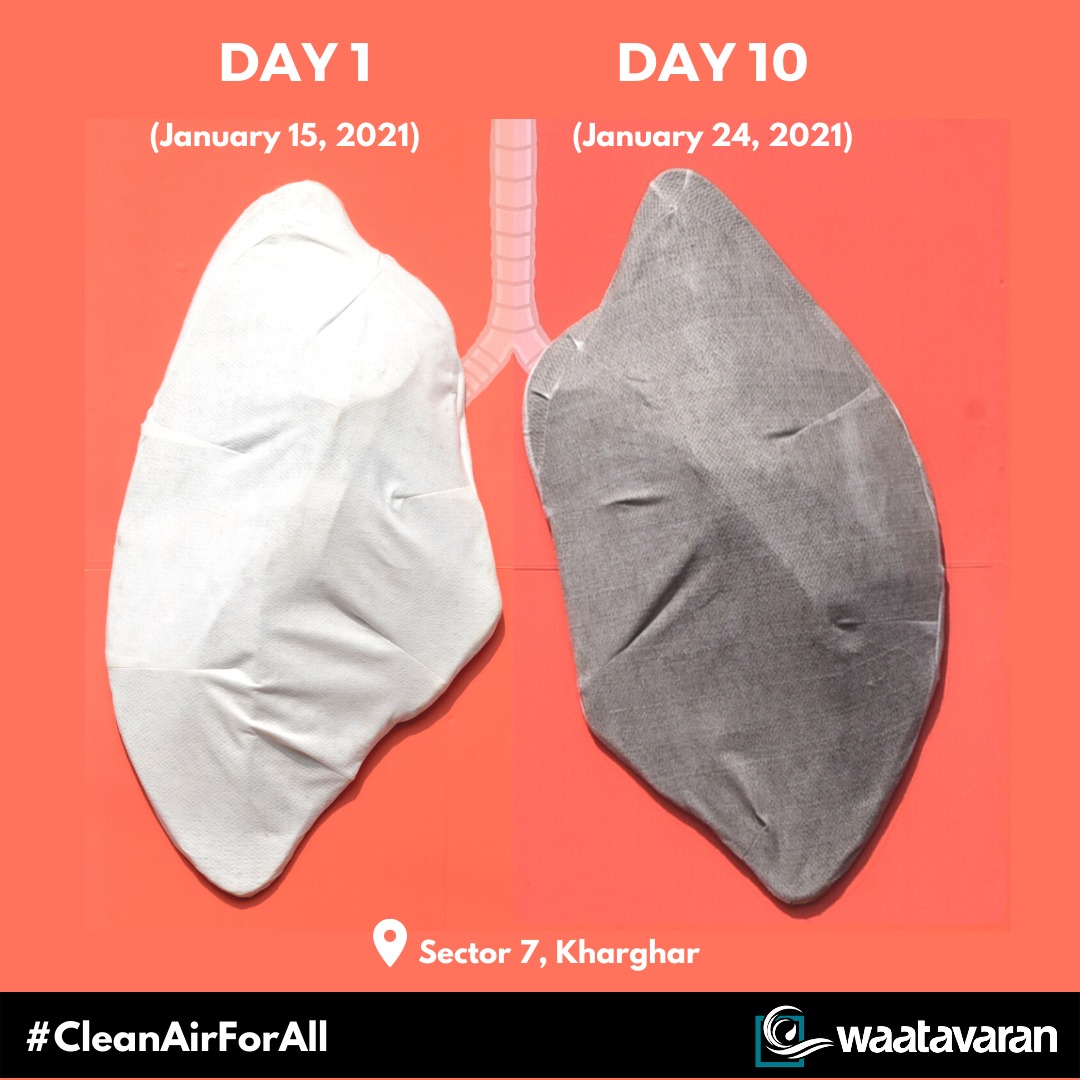A giant installation titled “The Billboard that Breathes” made up of a pair of faux lungs was erected in Kharghar, Navi Mumbai, Maharashtra on January 15. The white pair of lungs turned black in a matter of 10 days, causing dismay amongst the residents of the area.
The installation was a part of a campaign to raise awareness about the increasing air pollution in the Kharghar-Taloja-Panvel belt, and it was the brainchild of Waatavaran foundation, a non profit that works on the issues of climate change, environment and sustainability.
A study undertaken by the Waatavaran Foundation last month in December 2020, revealed that the residents of the area were breathing in highly polluted air especially between 6 am and 8 am, that had a very high presence of particulate matter (PM 2.5, that has the potential of posing grave risks to their health).
Time is ticking away. We urgently need a systematic plan to mitigate #airpollution in Navi Mumbai-Kharghar-Panvel region.
— Waatavaran (@waatavaran) January 28, 2021
We demand #CleanAirFoAll!@AUThackeray @CPCB_OFFICIAL @PanvelCorp @ithakurprashant @PrakashJavdekar @rajeshtope11 @BansodeSpeaks pic.twitter.com/VNMiJtOSdx
Some 1.7 million Indians died due to air pollution in 2019, according to a report ‘The India State-Level Disease Burden Initiative’ by interdisciplinary journal Lancet Planetary Health released on December 21, 2020.
Similar faux lungs were installed last year in January 2020 by the Waatavaran Foundation, at Bandra, another locality in Mumbai, that turned black in 14 days time, besides one in 2018 November in the national capital, Delhi, which took only six days to turn black.
“In Kharghar, the faux lungs began rapidly changing its colour from the second day itself and turned dark grey in seven days, however, on Monday, January 25 we saw that these had completely turned black,” said Bhagwan Kesbhat, founder of Waatavaran Foundation. This meant the presence of very high amounts of particulate matter indicating high ambient air pollution.

The installation of the faux lungs drew the attention of people to the quality of the air they were breathing. The billboard grabbed the attention of the residents in the area, besides Prashant Thakur, MLA Panvel, Kavita Choutmal, Mayor of Panvel and some legislators. Concerned about the extremely toxic effects of the rising air pollution in the area, Choutmal demanded the setting up of an expert committee to study the deteriorating air quality and to figure out solutions to deal with it.
“The speed at which the lung billboard has turned grey is scary for residents in the Panvel-Kharghar area,” said Srinath Kolare, a local resident. He added that it was a frightening reality check about the quality of air the children and the elderly were breathing in. “This issue needs to be tackled by the local administration at the earliest and we as citizens need to collectively raise our voice to demand urgent action,” he said.
“The blackening of the lungs signify the deposition of harmful pollutants in our lungs. Air pollution is one of the most common causes of lung diseases in India,” said Salil Bendre, pulmonology and bronchoscopy consultant at Nanavati Speciality Hospital, Mumbai. The rising carbon content in the atmosphere would lead to a dangerous wave of lung diseases among the residents, he warned. “The project rightly points to the need of controlling air pollution with immediate effect,” said the specialist.


















